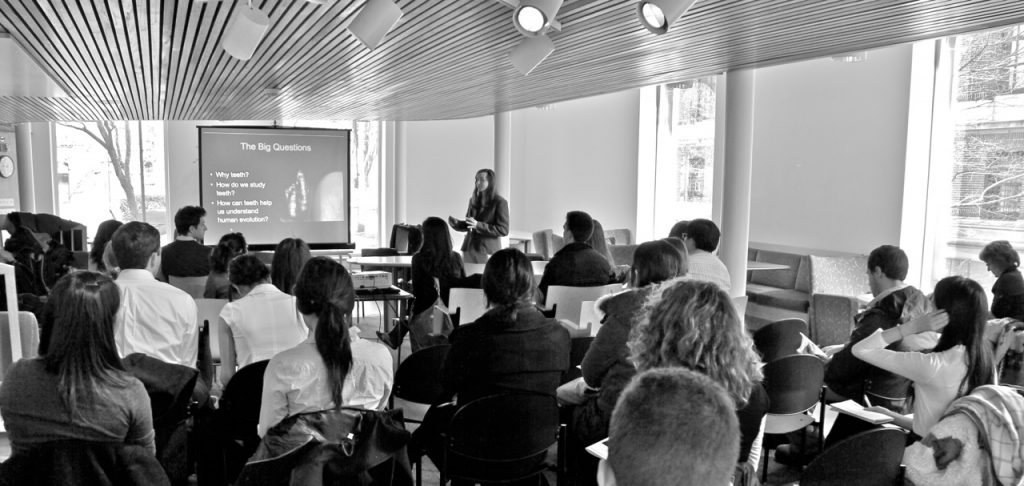
Courses Taught at Griffith University 2016-2019
School of Natural Sciences NSC 3029: Perspectives on Human Evolution
The course features a survey of the human fossil record, including the earliest evidence of putative humans in the late Miocene, and continuing up to the origin and expansion of modern humans in the Late Pleistocene. Genetic, geological, chemical, and archaeological evidence will be considered along with the fossil evidence for human evolution. Students will be challenged to critically evaluate on-going debates in palaeoanthropology with particular emphasis on Australia, and will develop skills in reading and discussing primary literature.
Courses Taught at Harvard University 2008-2016
Freshman Seminar 44s: Neanderthals and Human Evolutionary Theory
This course explores the origins and development of human evolutionary theory in parallel with the discovery and study of our “cousins,” the Neanderthals. Readings and discussions highlight breakthroughs in evolutionary theory since the 17th century, ranging from the Darwinian revolution to the field of “evo-devo.” The recent history of the Neanderthals is explored in detail, which mirrors intellectual developments in biological anthropology ranging from the re-conceptualization of race to innovations in recovering ancient DNA.
Human Evolutionary Biology 1420: Human Evolutionary Anatomy
How did the human body evolve, and how does it develop, grow and function? This lecture and lab course provides an integrative overview of human anatomy and evolution, with a focus on the musculo-skeletal system, including aspects of developmental biology and the fossil record. Topics covered include: muscular and skeletal development, comparative trunk anatomy, gross anatomy of the nervous and circulatory systems, comparative limb anatomy, dental anatomy and histology, and comparative cranial anatomy.
Human Evolutionary Biology 1421: Teeth
Teeth are some of the best preserved and most commonly-recovered elements in fossil assemblages. This seminar focuses on ways in which dental remains may inform studies of fossil primate growth and development, ecology, and social structure. Students will read and discuss current scientific literature, create their own histological tooth sections in the Dental Hard Tissue Laboratory, and conduct pilot research projects.
Human Evolutionary Biology 1423: Human Origins and Evolution
This course traces evidence for hominin evolution to understand how and why we became human. Readings cover issues in evolutionary and developmental biology, with an emphasis on the fossil record and comparative data on living primates. Hands-on laboratory sessions feature fossils and comparative primate skeletal material to complement the lectures. Students are challenged to critically evaluate on-going debates in paleoanthropology, and to develop skills in reading primary literature and interpreting formal scientific writing in preparation for student-led debates.
Courses Taught at Stony Brook University 2000-2004
Women in Science 187: Introduction to Research – Dental Anthropology
This short course features hands-on laboratory sessions using primate dental material to illustrate how scholars conduct original research. Students are given an opportunity to use polarized light microscopy to image tooth structure, develop their own 35 mm film in a darkroom, produce photographs of great ape tooth microstructure, and measure enamel thickness using a digitizing tablet. Course evaluation is based on participation and a formal research presentation at the conclusion of the Women in Science and Engineering semester-long research immersion.